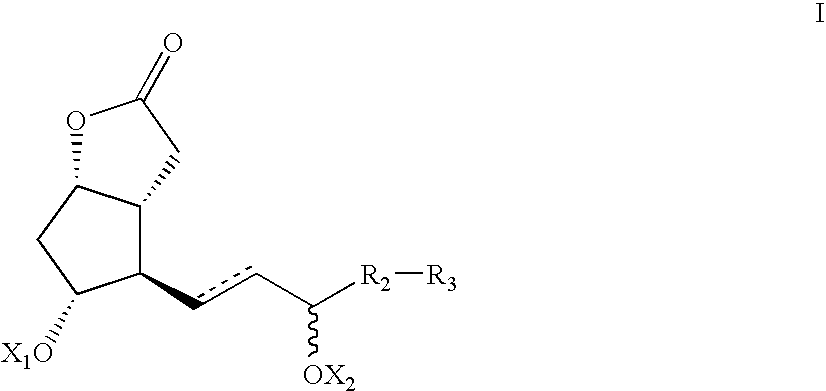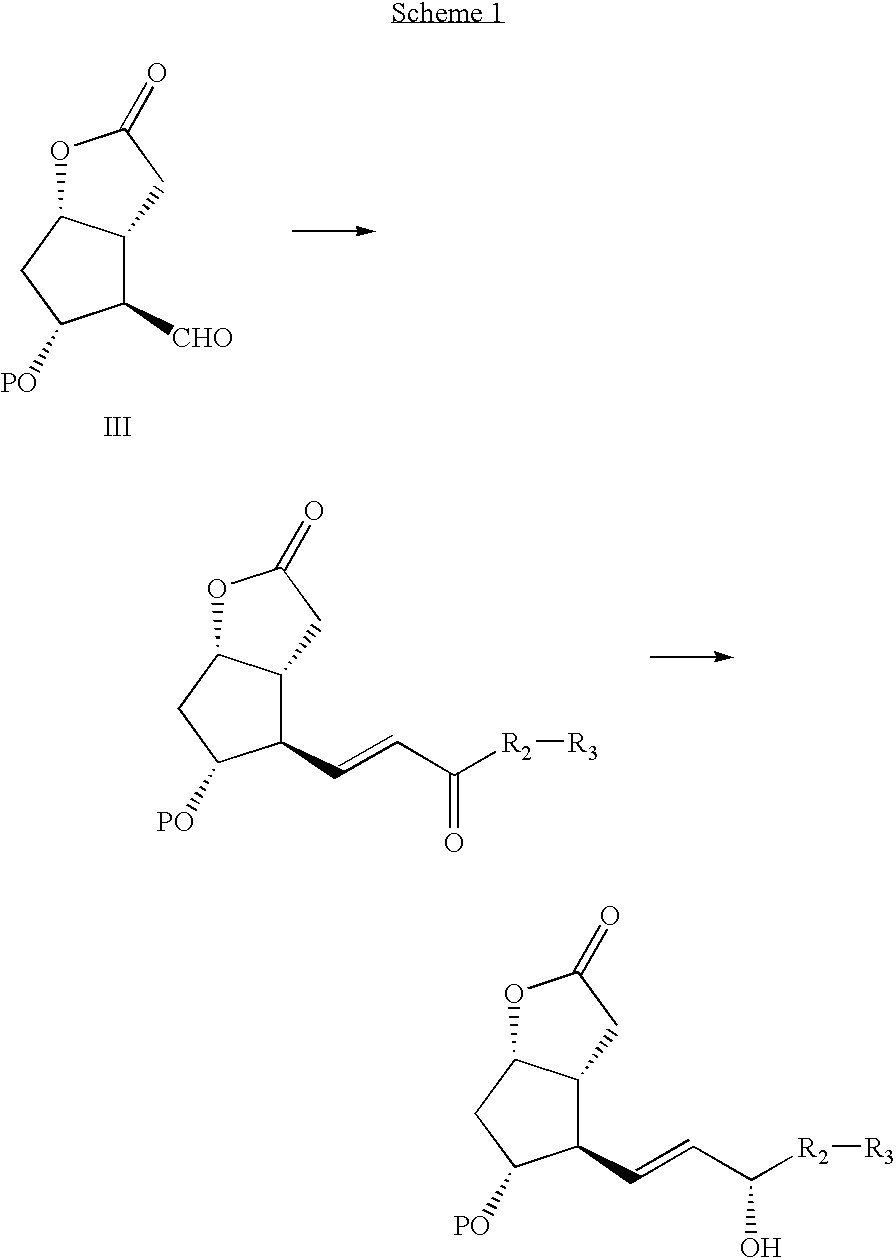Processes and intermediates for the preparations of prostaglandins
a technology of prostaglandins and intermediates, applied in the field of new products, can solve the problems of difficulty in reproducible production, large amount of 15- isomer generated as a major impurity, and the difficulty of conventional methods for producing lactones of formula i encountered problems to be solved
- Summary
- Abstract
- Description
- Claims
- Application Information
AI Technical Summary
Benefits of technology
Problems solved by technology
Method used
Image
Examples
example 1
4-[3-(Trifluoromethyl)phenoxy]-(3R)-triethylsilyloxy-1-butyne
[0061]
(3R)-4-[3-(Trifluoromethyl)phenoxy]-3-hydroxy-1-butyne (6.7 g, 29 mmol) and imidazole (2.96 g, 44 mmol) were dissolved in 100 ml ethyl acetate and the solution was cooled to about 5° C. Chlorotriethylsilane (6.3 ml, 38 mmol) was slowly added to the solution in 30 minutes at a temperature maintained at about 5-10° C. throughout the addition. The mixture was brought to room temperatures slowly. The precipitate was removed by filtration. Subsequently, the reaction mixture was washed with 50 ml saturated aqueous sodium bicarbonate solution twice, further washed with brine (50 ml), dried over anhydrous magnesium sulfate, filtered, and concentrated to obtain the crude product (13.2 g). The crude product was purified by distillation to give the (R)-silyl ether as colorless oil (9.1 g, 91%).
[0062]1H-NMR (CDCl3TMS): δ7.18 (m, 1H), 6.93 (m, 2H), 6.80 (m, 1H), 4.71 (m, 1H), 4.04 (m, 2H), 2.45 (d, 1H), 0.98 (t, 9H), 0.67 (q, ...
example 2
5-Phenyl-(3S)-triethylsilyloxy-1-pentyne
[0063]
The titled compound was obtained from 5-phenyl-(3S)-hydroxy-1-pentyne as an oil in 88% yield according to the same procedure as described in Example 1.
[0064]1H-NMR (CDCl3TMS): δ7.39 (m, 2H), 7.29 (m, 3H), 4.47 (m, 1H), 2.89 (m, 2H), 2.53 (d, 1H), 2.12 (m, 2H), 1.08 (t, 9H), 0.77 (q, 6H).
example 3
(3S)-Triethylsilyloxy-1-Octyne
[0065]
The titled compound was obtained from (3S)-hydroxy-1-Octyne as an oil in 95% yield according to the same procedure as described in Example 1.
PUM
| Property | Measurement | Unit |
|---|---|---|
| optical purity | aaaaa | aaaaa |
| temperature | aaaaa | aaaaa |
| temperature | aaaaa | aaaaa |
Abstract
Description
Claims
Application Information
 Login to View More
Login to View More - R&D
- Intellectual Property
- Life Sciences
- Materials
- Tech Scout
- Unparalleled Data Quality
- Higher Quality Content
- 60% Fewer Hallucinations
Browse by: Latest US Patents, China's latest patents, Technical Efficacy Thesaurus, Application Domain, Technology Topic, Popular Technical Reports.
© 2025 PatSnap. All rights reserved.Legal|Privacy policy|Modern Slavery Act Transparency Statement|Sitemap|About US| Contact US: help@patsnap.com



